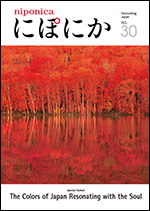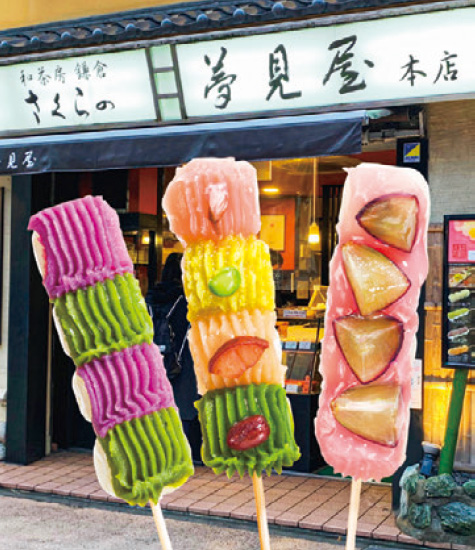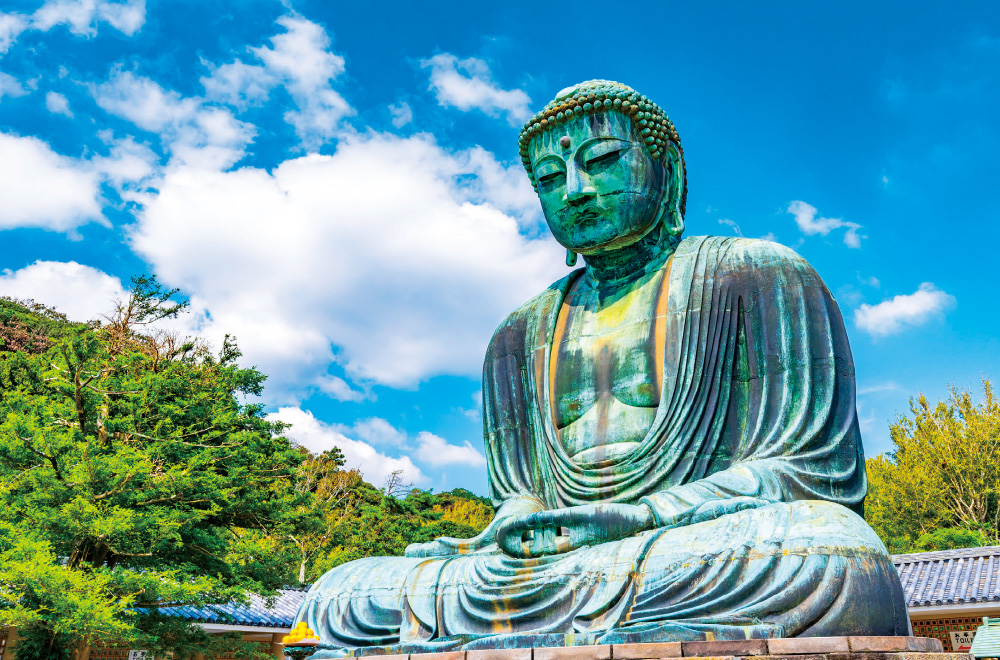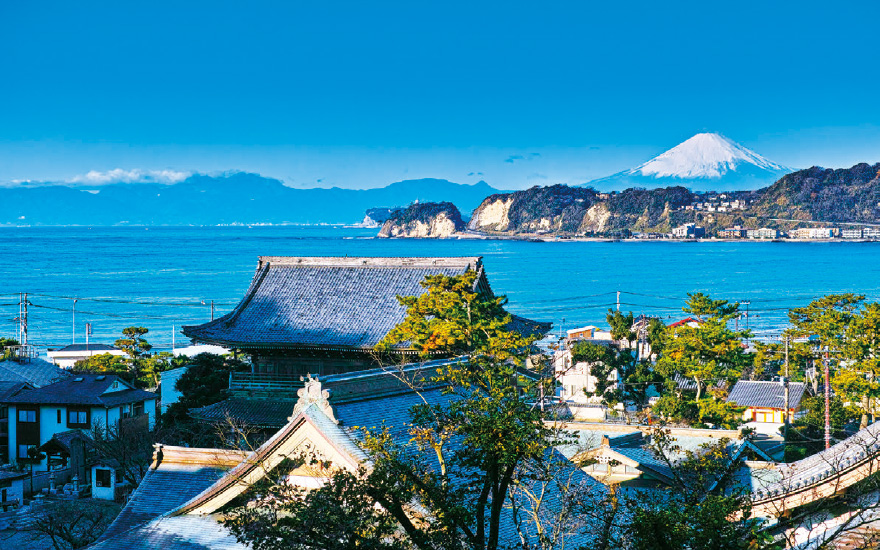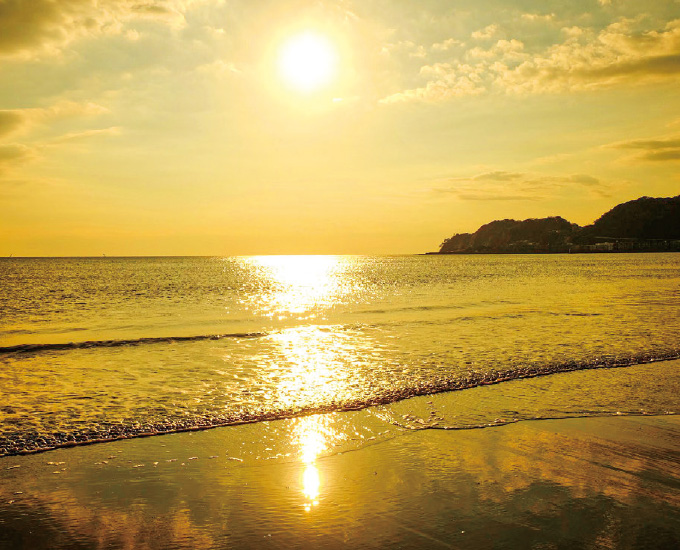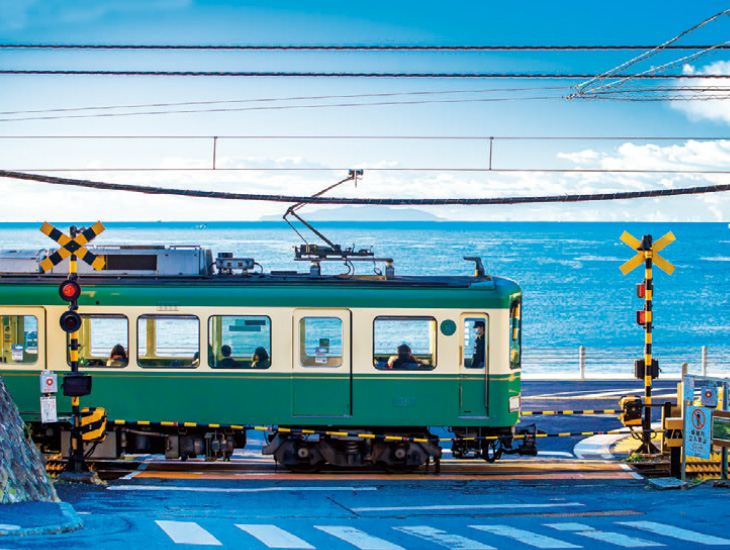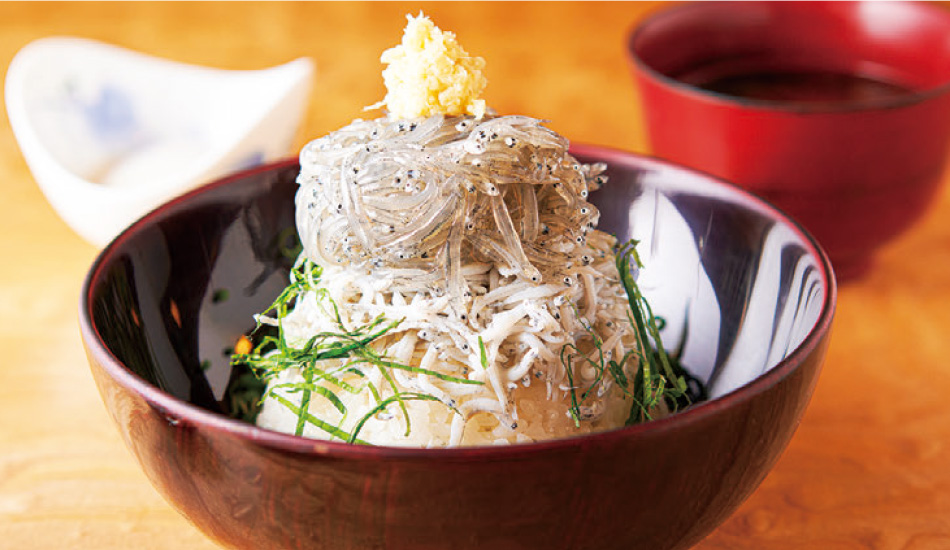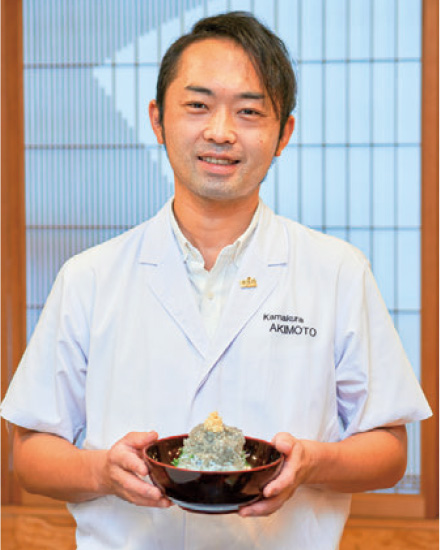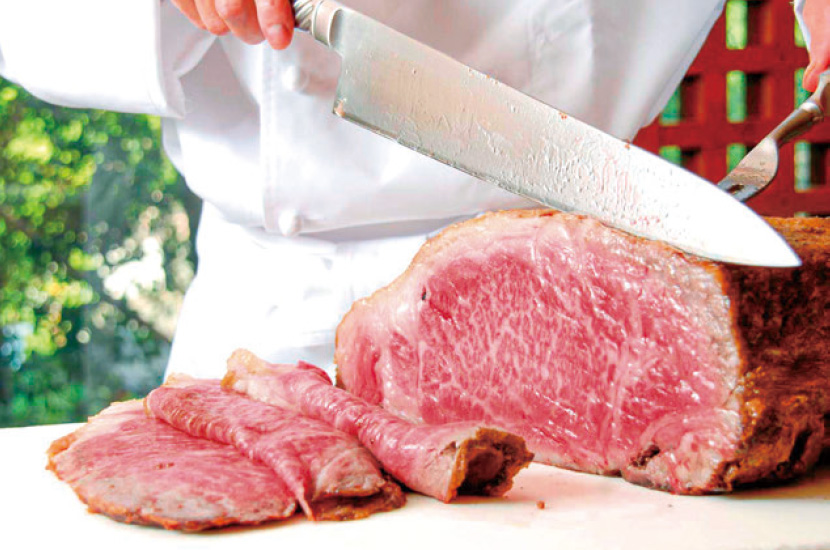
2021 NO.30
Menu
 Strolling Japan
Strolling Japan
In the area around Kamakura Station, you can’t miss the energy of Wakamiyaoji Street, which is the approach to Tsurugaoka Hachimangu Shrine, and its parallel Komachidori Street. In addition to a broad range of shopping choices including traditional souvenirs, you can drop into one of the many casual restaurants or buy a snack to nibble on while strolling.
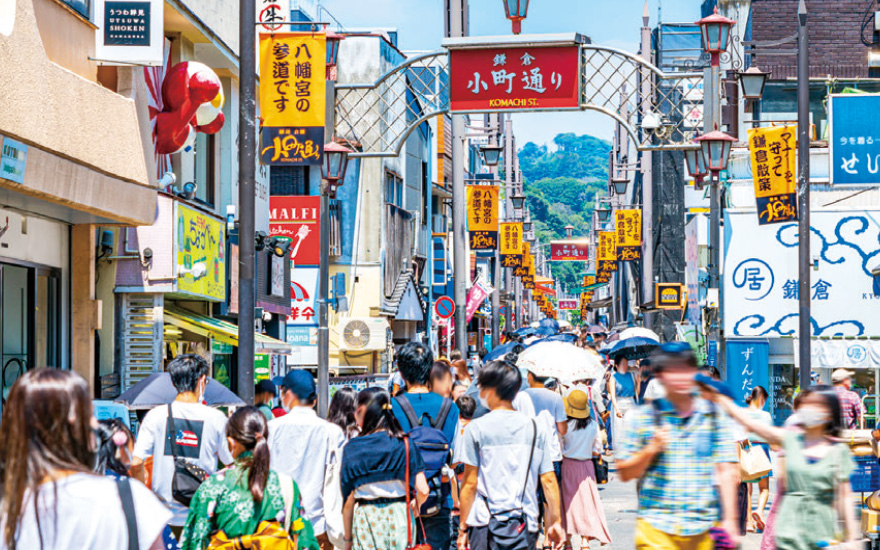
Komachidori Street is always vibrant with many tourists.
If you head west from Kamakura Station toward Hase, you will eventually arrive at Kotoku-in Temple, which is dedicated to the national treasure copper statue of Amitabha Buddha, known popularly as the Great Buddha of Kamakura. This is a must-see highlight of Kamakura and it is said that construction started circa 1252. Measuring 11.3 meters high and weighing 121 tons, you will certainly be amazed at its colossal scale.
The slightly downward-facing expression of the Great Buddha of Kamakura is striking.
Now, let’s walk some more to the south, aiming for the beach. The mouth of the Nameri River divides the beach, with Zaimokuza Beach to the east and Yuigahama Beach to the west.
Zaimokuza Beach has very clear waters and a beautiful shallow shore. Standing magnificently in this area, is Komyoji Temple. Behind it is Mount Tensho–a popular spot with stunning views. Being close to Tokyo, Yuigahama Beach is lively with crowds in the summer. The coast stretches to the west with spots such as Inamuragasaki and Shichirigahama that have stylish cafes and more. Along the coastline with the blue sea and skies in the backdrop, the nostalgic-looking local Enoden train runs through the town. This delightful sight looks like a page out of a picture book.
A popular dish that Kamakura is famous for is the shirasu (whitebait) rice bowl. Fresh shirasu rice bowls can be savored from mid-March through the end of the year, when shirasu-fishing is permitted. When boiled with water and salt in a kettle, it is called kama-age (kettle-boiled) shirasu. Shirasu rice bowls that combine the smoothness of soft, fluffy kama-age shirasu and the juicy texture of raw shirasu are delectable.
An array of colors can be enjoyed through the seasons in Kamakura. Brimming with charm, you’ll want to revisit here again and again.
The shirasu rice bowl at Akimoto restaurant has two layers, with raw shirasu on the top and kama-age shirasu underneath. The exquisite combination can be savored with rice.
Photos courtesy of : Tsurugaoka Hachimangu Shrine, Italian Tomato Co., Ltd. Photos: PIXTA
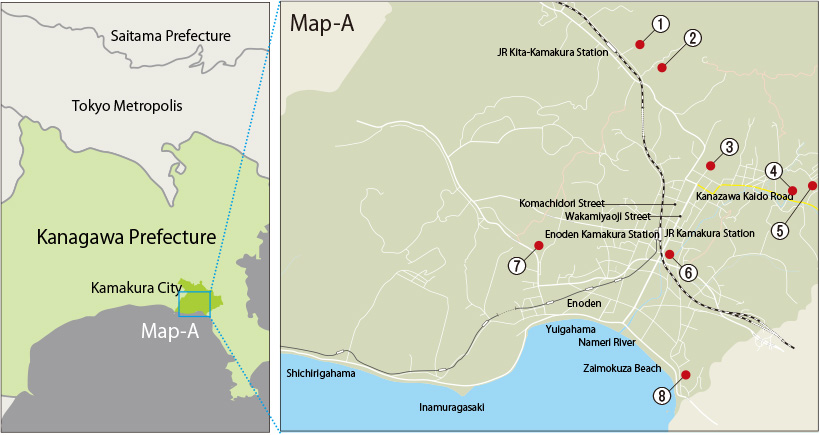
Kamakura area map
①Zuirokusan Engakuji Temple②Fugenzan Meigetsuin③Tsurugaoka Hachimangu Shrine④Daizozan Sugimoto-dera Temple⑤Tokasan Jomyoji Temple⑥Kamakura Farmers’ Market⑦Kamakura Daibutsu Kotoku-in Temple⑧Tenshozan Renge-in Komyoji Temple
•Access
•Tokyo (Approx. 60 min. by JR Yokosuka Line)
➡Kamakura
•Haneda Airport (Approx. 30 min. by Keikyu Airport Line) ➡ Yokohama (Approx. 25 min. by JR Yokosuka Line) ➡ Kamakura
•Contact information
Department of Commerce Tourism Kamakura City
http://www.city.kamakura.kanagawa.jp/visitkamakura/en/

